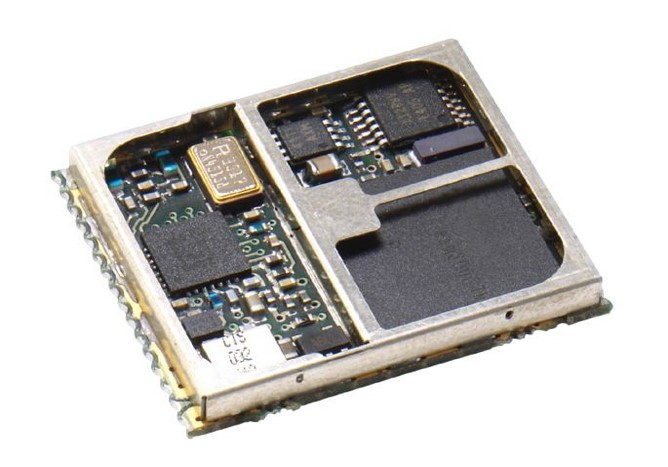Resilient, high-assurance positioning, navigation and timing for mission-critical applications in challenged environments.
Today’s high-integrity satellite navigation community requires the redundancy and reliability afforded by multi-constellation tracking, combined with interference mitigation (IM) and intelligent signal management.
The Q40-MicroPNT™ and Q40-MicroStrike™ are part of a family of Global Navigation Satellite System (GNSS) receivers developed and marketed globally by QinetiQ. These next-generation GNSS navigation receivers are for users for whom positioning, navigation and timing (PNT) is mission critical including Governmental, military, critical national infrastructure, industrial and demanding commercial applications.
The advanced design provides robust PNT even in contested and degraded signal environments with low power consumption. High-assurance PNT software provides Receiver Autonomous Integrity Monitoring (RAIM), constellation cross-checks and signal management to ensure a high level of availability and accuracy. The receiver dynamically takes full advantage of available open-service signals based on a configurable policy manager.
Q40-MicroPNT™
The Q40-MicroPNT™ open service GNSS receiver delivers these features with the diversity of signal selection afforded by a tri-band receiver architecture. The receiver delivers robust, reliable navigation and timing enabled by single antenna interference mitigation and assured PNT software capable of detecting and mitigating spoofing and cyber threats.
Q40-MicroStrike™
The Q40-MicroStrike™ GNSS receiver supports guidance, positioning, navigation and timing of high dynamic systems and platforms used in demanding scenarios. Applications include use in agile tactical weapons, course corrected munitions, agile platforms and a broad range of test and evaluation uses.
Q40-MicroStrike™ provides the reliability and redundancy afforded by multi-constellation and multi-signal tracking in high dynamic environments. The receiver delivers these features with the diversity of signal selection afforded by a tri-band receiver architecture.
Key Features
Multi-GNSS Constellation Support
Open service GPS and Galileo satellite constellations ensuring a high level of availability, redundancy and accuracy. Support for other GNSS constellations (GLONASS, Beidou, SBAS and other GNSS/regional services). Configurable policy manager for constellation inclusion/ exclusion based on real-time signal assessment.
Secured, Resilient Navigation using Open Services
None of the costs associated with crypto ownership. Simplified integration and use in a range of applications. Can be used with an external Controlled Radiation Pattern Antenna (CRPA) to further enhance resilience.
High Performance, Low Power, Reliable Design
New advanced RF and digital ASICs giving class leading performance at low size, weight and power.
Fast Time to First Fix
Unprecedented number of simultaneous time/frequency search windows, enabling very fast Time to First Fix (TTFF) in challenging scenarios.
Product Capability Roadmap for Integrators
Common architecture and software offering incremental capability upgrades providing performance enhancement and responses to new threats.
Full Support for Multi-Sensor Integration
Multiple interface protocols to aid integration into a wide range of applications. Support for integrated navigation (loose, tight, ultra-tight coupling).
Not subject to ITAR controls
Full capability subject to appropriate export licence. Export variants available.
Performance envelope
New digital and RF ASICs in a macro-module implementation giving class leading size, weight and power benefits. Other form factors can be made available.
High Dynamics
Acquisition and tracking at the very high accelerations experienced by advanced weapons, shells and mortars. Capable of surviving the extreme environmental conditions of shell and mortar launch set-backs.






